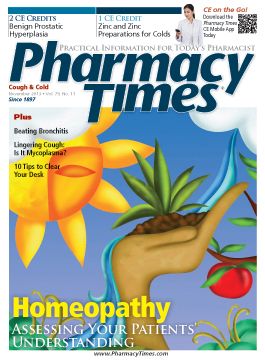Your Compounding Questions Answered
This month's column addresses compounding promethazine gel.
Q: I have a pharmacist in one of my stores looking for a promethazine gel recipe. I tried searching your website for one, but couldn’t find it. Can you please help? Thanks!
A: Promethazine HCl is a phenothiazine antihistamine. It is a white to faint yellow crystalline powder that is practically odorless. It is soluble in water and practically insoluble in ether or acetone. Its water solubility is used to good advantage in compounding preparations based on pluronic lecithin organogel (PLO) gel or penetration-enhanced creams. Its solubility in water is particularly important to compounding pharmacists, because it is slowly oxidized in air, but more rapidly with moisture. This oxidative process causes inactivation, turning it blue, which makes it easy for compounders to recognize subpotent preparations. Promethazine HCl has significant anticholinergic activity and is used as an antinauseant and antihistamine as well as for pre- and postoperative sedation and adjunctive therapy in pain relief. It is well absorbed when administered orally, rectally, or by intramuscular injection, reaching peak effect within 20 minutes. Transdermal absorption is slower because of the nature of the formulations, which can mean dose titration in the clinical setting can be based on easily observed effects (sedation, relief of symptoms, and/or dry mouth). The drug can cause blood pressure changes (usually hypotension, but hypertension has been reported); if a patient exhibits photosensitivity, continued therapy may be contraindicated. In children, the drug can cause hyperexcitability and nightmares.
Several articles containing formulations and evidence of transdermal absorption are available. For a discussion of phospholipid-mediated transdermal penetration of drugs, please see previous columns or e-mail for references.
One suggested formulation is promethazine 25 mg/mL penetrating vanishing cream, calculated to make 10 g (~10 mL; useful when dispensing in unit-dose topical/oral syringes).
Ingredients:
- Promethazine HCl 0.250 g
- Water, purified, as needed
- Penetration-enhanced vanishing cream (eg, Pentravan [Fagron])a as needed to 10 g
Suggested supplies:
- Electronic balance, weigh papers or weigh boats
- Spatulas and mortar and pestle (ceramic or Wedgwood) or electronic mortar and pestle
Suggested method:
- Calculate the required quantity of each ingredient for the preparation.
- Accurately weigh and/or measure each ingredient.
- Levigate the promethazine HCl powder with a few drops of water in the mortar, using the pestle to make a smooth paste.
- Geometrically levigate the paste in step 3 with the penetration-enhanced vanishing cream.
- Dispense it in an opaque ointment jar, an ointment tube, or light-resistant unit-dose syringes.
Suggested best-used-by date: 30 days
aPLO combination gel (eg, 20% Polox gel with Lipoil 24% [Fagron]). Store at room temperature to reduce phase separation. The application area should be covered with an occlusive, nonabsorbent dressing (eg, Tegaderm [3M], Opsite [Smith & Nephew]).
Mr. Erickson is director of professional affairs and director of professional services at Gallipot, a Fagron company.

